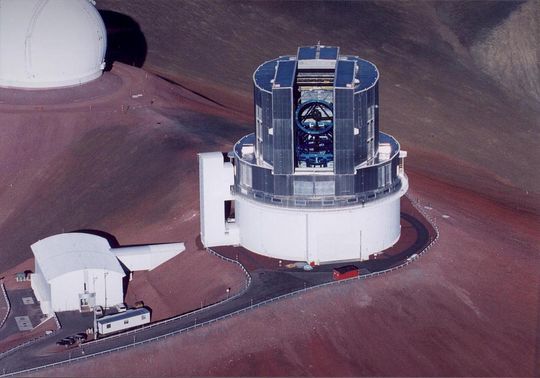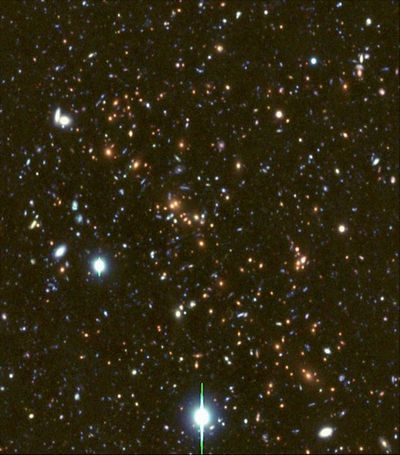
Elucidating the life of galaxies and clusters of galaxies
How was the universe born? How did it evolve into the present state? And what is its destiny? It is the goal of observational cosmology to answer these fundamental questions based on observational data. We aim at elucidating how galaxies and clusters of galaxies formed past and evolved into the shape we see in the present-day universe. The most direct approach to this issue is to investigate properties of galaxies and clusters of galaxies residing in the universe at different epochs (distances) by looking back deep into the universe.
We have been studying the distant (past) universe mostly with Subaru telescope and the nearby (present) universe using the large database constructed in the Sloan Digital Sky Survey (SDSS-I). Subaru prime focus camera, Suprime-Cam, which we developed in collaboration with people at National Astronomical Observatory of Japan, is extremely effective in the survey of galaxies residing in the distant universe and it has been a powerful tool of our research. Subaru prime focus is going to be improved for a wider field of view and a new wide-field camera, Hyper Suprime?Cam (HSC) will become operational in late 2011. A new multi-object spectrograph is also planned for the new prime focus. HSC has a field of view nearly 10 times wider than Suprime-Cam, and the multi-object spectrograph will be able to take spectra of more than 2000 objects simultaneously. These instruments will bring a qualitative leap in the study of galaxies.
We will use such next-generation Subaru prime focus instruments as the key tool of our study. Other instruments of Subaru telescope as well as other various telescopes continue to play an important role in our study. The data from ongoing SDSS-III, together with those of SDSS-I and SDSS-II, will also be used for the study of nearby galaxies. We have been working mainly in the optical and infrared regime, but interaction with submillimeter wavelengths will become more and more important.





